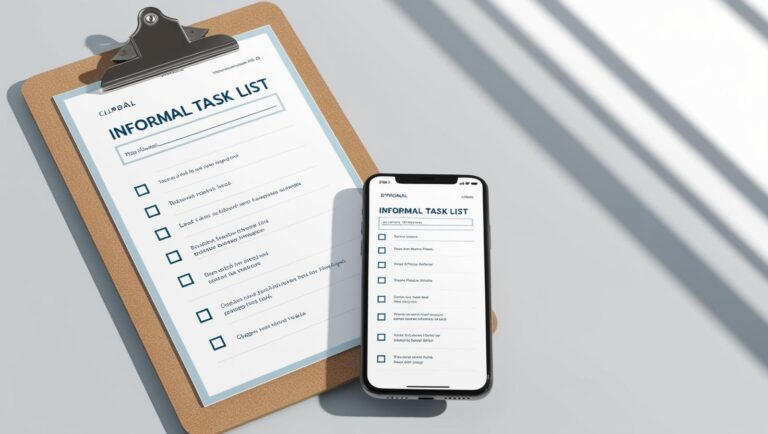What Goes Into a Great Training Plan (Even for Small Businesses)
If you’ve ever filled out a Workplace Skills Plan (WSP) for SETA compliance, you know the feeling: it can seem like a box-ticking exercise. You gather a few course names, jot down dates, and submit it — hoping it counts. But here’s the truth: a good training plan is far more than a compliance document. It’s a roadmap for growing your team, unlocking potential, and building a culture of learning in your business.
Small businesses in particular often underestimate the value of a structured training plan. When you’re managing just a handful of people, it can feel like overkill. Yet, the smaller your team, the more critical it is to plan development intentionally. Every skill gap or knowledge lapse shows up immediately in operations, customer satisfaction, and employee engagement. With a practical, well-thought-out training plan, you not only meet SETA requirements but also strengthen your team and future-proof your business.
In this guide, we’ll unpack what makes a training plan effective, explain why each element matters, and show you how to create one that works for your small business — without needing a corporate HR department or massive L&D budget.
What Is a Training Plan, Really?
At its core, a training plan is surprisingly simple. It’s a structured way of answering four key questions:
What skills does your team need?
Who needs them?
How and when will you deliver the training?
How will you track and measure results?
That’s it. Whether you jot it down in a spreadsheet, use HR software, or stick notes on a wall, as long as you cover these four elements, it counts. SETAs and auditors care about structure, clarity, and intention, but your team cares about results. A good training plan serves both purposes.
Too often, small businesses treat the WSP as an administrative chore. They list generic courses, repeat last year’s plan, or ignore informal learning entirely. This approach misses the bigger opportunity: using the plan to actively develop people, improve performance, and strengthen business outcomes.
Identifying Skills Gaps: Start With Real Challenges
The first step in building an effective training plan is understanding where your business struggles. This isn’t about guessing or copying trends; it’s about looking at real operational bottlenecks.
Ask yourself questions like:
Where are mistakes or delays happening?
Which tasks regularly frustrate employees or clients?
What do you want your team to do better, faster, or more efficiently?
For example, imagine your dispatch process is slow, and clients frequently complain about delayed deliveries. The skills gap might not be obvious from job descriptions alone. You might discover that staff need better proficiency in your stock management system and stronger time management skills. These gaps become the starting point for training.
Skills gaps should always be operationally grounded. They’re not about ticking a box for the ATR or BBBEE scorecard; they’re about solving real problems and equipping your team to succeed.
Mapping Employee Roles and Needs
Once you know your business’s pain points, it’s time to break your team down by role or department. Not all employees have the same training needs. New hires might require onboarding and basic skill development, while experienced staff may need advanced or leadership-focused training.
For example, in a small retail business, your sales staff may benefit from customer service workshops and upselling techniques, while store managers might need inventory management and team leadership training. By personalizing the training plan to roles and experience levels, you demonstrate intentionality and create a roadmap that resonates with your team.
This role-specific approach also signals to SETAs that you’re thinking beyond generic, one-size-fits-all interventions, which strengthens the credibility of your plan.
Defining Clear Training Objectives
A training activity without a clear objective is just a course title. Instead of listing “Excel course” in your plan, be specific about the outcome you want to achieve.
For instance, rather than simply scheduling an Excel workshop, define the goal: “Improve stock tracking accuracy by training the store manager on intermediate formulas and data validation.” This shows intentionality and ensures your training aligns with real-world business needs.
SETAs care about outcomes, not just course names. Internally, your team will benefit because each training session is directly tied to measurable improvements in performance, efficiency, or capability.
Choosing the Right Methods of Delivery
Training delivery doesn’t have to be expensive or complicated. In small businesses, a mix of methods — formal and informal — often works best. Consider options like:
On-the-job coaching
Shadowing senior staff
SOP walkthroughs
External accredited courses
Online tutorials or YouTube demonstrations
Role plays and scenario-based learning
The key is that each method is planned, trackable, and aligned with objectives. For example, a new customer service hire might learn about complaint handling by shadowing an experienced team member, followed by a structured role-play exercise. This approach is inexpensive, practical, and immediately applicable.
Blended learning — combining informal, hands-on approaches with formal training — is especially effective for small teams. It allows employees to learn in ways that suit their style, while giving you tangible evidence for ATR reporting.
Timing Matters
Even a rough timeline makes a training plan more credible and actionable. Whether quarterly, monthly, or tied to specific events like product launches or onboarding periods, a schedule ensures accountability.
For example, if your marketing team is preparing for a major campaign, schedule digital marketing upskilling one month before launch. Or, if you’re rolling out a new point-of-sale system, schedule system training for all relevant staff in the week leading up to deployment.
Timing also demonstrates to SETAs that you’re not planning courses randomly. Each intervention is purposeful, aligned with operational priorities, and integrated into your business calendar.
Evidence and Evaluation: Proving Impact
A training plan is only as good as your ability to show it works. For every activity, decide how you’ll collect proof and measure success.
Evidence can include:
Attendance sheets or screenshots of online course completion
Feedback forms or reflection logs
Performance metrics before and after training
Practical assessments or task audits
For example, if your training goal is “reduce stock reporting errors by 50%,” track error rates before and after the session. For soft skills, a simple peer or manager feedback form can serve as evidence.
This approach not only strengthens ATR submissions, but also builds your internal culture of accountability and continuous improvement.
A Simple Training Plan Template
You don’t need a complex system to start. A straightforward spreadsheet or table can capture all the essential details. Here’s a practical example:
| Skill Area | Employee(s) | Method | Outcome Goal | Timeline | Evidence Type |
|---|---|---|---|---|---|
| Excel Formulas | Store Manager | Online video + internal demo | Reduce stock reporting errors by 50% | Q2 | Screenshot + task log |
| Conflict Resolution | All Team Leads | Internal role-play | Improve team communication | Q3 | Attendance + feedback |
| Fire Safety | All Staff | External 1-day session | Meet OHS compliance | Q2 | Certificate |
Three lines like this already constitute a valid training plan, and more importantly, they make your training strategic and measurable.
Avoiding Common Training Plan Mistakes
Even the best intentions can go wrong. Common mistakes include:
Listing trendy or generic courses that don’t address real needs
Copying last year’s plan without reviewing current gaps
Ignoring informal development, like shadowing or mentoring
Excluding soft skills, which are often critical in small teams
If a session helps your team work better, it belongs in your plan — regardless of whether it is accredited or formal. SETAs value relevance and evidence over fancy course titles.
Using Your Training Plan to Strengthen Your SETA Submission
A robust training plan does more than tick boxes; it positions your business for long-term success. When your plan:
Matches your ATR
Links clearly to operational performance
Includes informal learning
Has documented proof
…you’ve effectively turned a compliance exercise into a strategic skills development roadmap. This approach demonstrates to SETAs that your training is credible, intentional, and impactful, increasing the likelihood of grant approval and recognition.
Making It Work in Small Businesses
The beauty of a well-designed training plan is that it scales with your business. You don’t need a corporate HR department or a large L&D team to implement it. The principles are simple: identify real needs, align training with roles, clarify objectives, choose appropriate delivery methods, schedule appropriately, and collect evidence.
Even with a team of five, these steps help you:
Reduce errors and inefficiencies
Improve employee confidence and retention
Align skills development with business growth
Demonstrate credibility for SETA submissions
A practical training plan creates a culture of learning where employees see growth opportunities and the business benefits directly from improved skills and performance.
Final Thought
Creating a training plan isn’t about busywork, certificates, or checking boxes. It’s about clarity, intention, and measurable growth. Small businesses that invest in structured, real-world training reap the benefits immediately: better performance, happier employees, and a business that’s ready to scale.
Start simple. Track what’s already happening. Build on it. Over time, your training plan will evolve into a strategic tool that not only meets SETA requirements but strengthens your entire business ecosystem.
If you’re ready to jumpstart your skills development process, consider using a plug-and-play template. Tools like the Smart SDF Starter Kit include sample plans, editable checklists, and reporting tips — giving you a head start on building a truly effective training roadmap.
Your team, your clients, and your bottom line will thank you.



